


Home » The Family Bluetick
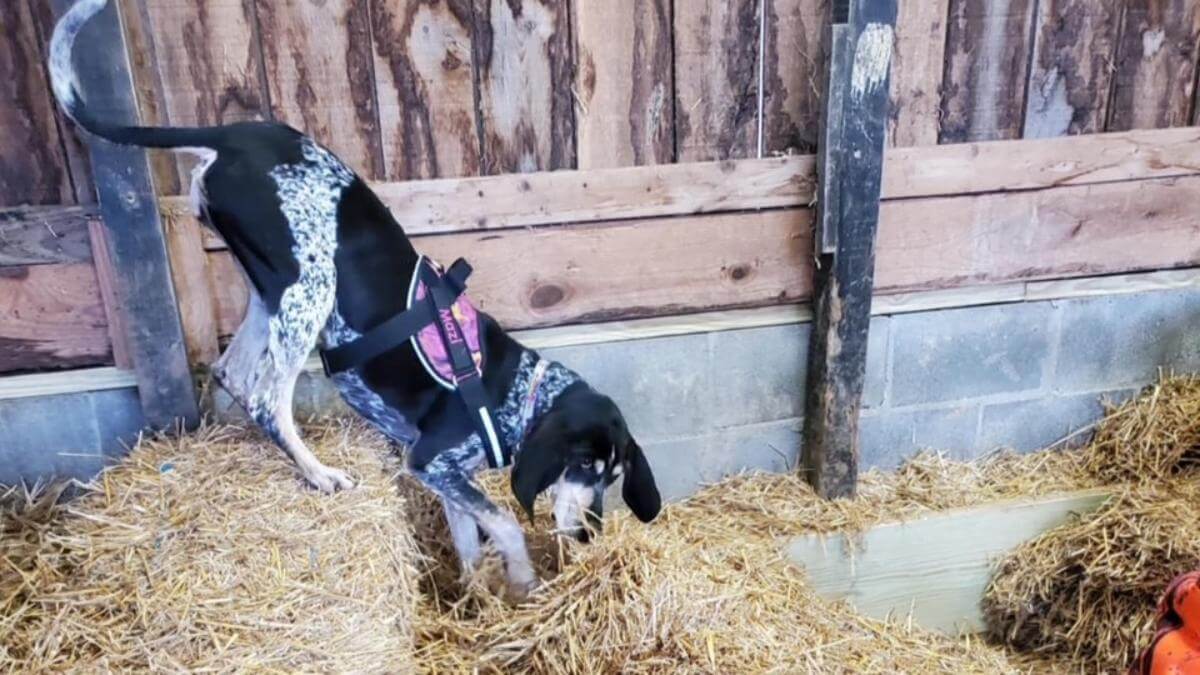
When the family album is dusted off and the black and white pictures are passed around, lurking among photos of family members is often found the once ubiquitous Bluetick Coonhound.
This is a hound that accompanied the ramblings of many an adventurous child tasting freedom in the big world of their farm and woods. The two clambered over trees and boulders, waded through creeks, and wandered through crops higher than their heads while the faithful hound periodically bawled a location to let a parent know which direction they had gone.
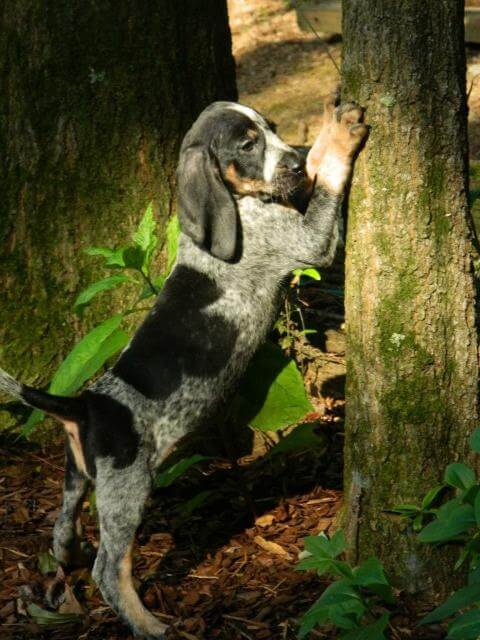
No more attentive companion or guardian could be found. The family Bluetick was such a beloved and integral part of the family that their stories were passed down as family lore, whether discussing the big money offered for Nellie back in the 1960s or old Sam hitting a trail that led him 100 miles away, bawling all the time. Names like Rip, Rounder, and Ruby were just as familiar to grandchildren of hunters as the names of any of their ancestors. And it was a lucky kid who was honored with a name of a favorite hound like Sam or John.
Thus, the Bluetick Coonhound was an essential part of the family. After the day’s chores of guarding and babysitting were done, this energetic and amiable hound was ready and willing for a night hunt to find food and marauders. These dogs were trained to hunt whatever varmint was causing the most trouble, and today they continue to be used on a variety of game.
Bred to be a stockier and larger-boned dog than their close relation, the American English Coonhound, the size of the Bluetick Coonhound allows them to tackle game from the wily raccoon to bear, wild boar, and large cats. When practicing their art as a tireless tracker, the Bluetick has amazing tenacity and the ability to follow a cold track, whether it is a few hours or a few days old, voicing a bawl that is music to a Bluetick lover’s ears.
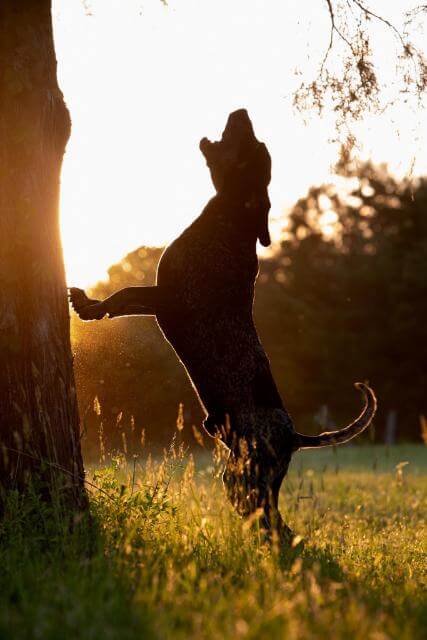
To truly appreciate the voice of the Bluetick, you really need to sit and listen to a hunt. The hunting song is an unchanged, nocturnal melody that has rolled through the hills and fields for hundreds of years. The first sound would be a long, singing note as a scent of interest is picked up. The second verse is punctuated by bawls.
A bawl itself is a discordant, prolonged yelp. Blueticks don’t bark like most dogs. One dog can bawl more notes packaged in one chord than a quartet of another breed could manage. Finally, comes the chop, a short, hard sound which is as close as a Bluetick comes to barking. The faster the chops, the closer the game. It is as clear a message and as exciting as a radio broadcast baseball game. Unfortunately, we rarely get to hear the full tune any more. Please remember that life for the first couple of hundred years of America had a very different view of dogs running loose and it is the rare person who has enough land to let a pack run free anymore. And not all of our neighbors may be as appreciative of that harmonious chorus.
So, today’s owner has had to adapt to help this breed, which originated with the founding of our country, fit into our society. The days of raccoon hunts are on the wane for many reasons. Some raccoon hunters seem to think this means the end of coonhounds, but new owners are finding other ways to enjoy this versatile scenthound who is capable of so much more than just that one trick.
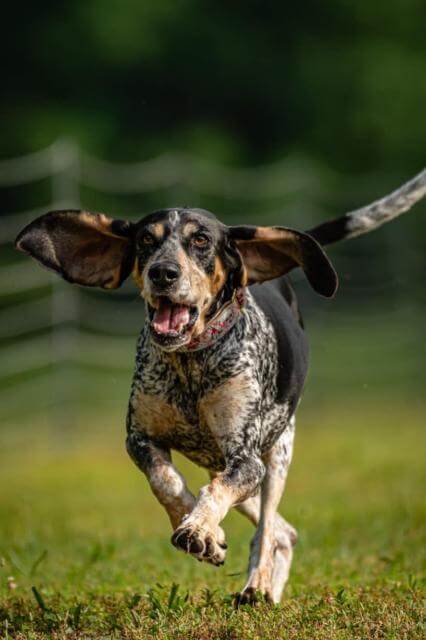
For the owner who likes a working relationship with their dog, a Bluetick can be an interesting Obedience challenge. The Bluetick is an intelligent dog, though his stubborn streak may fool many about that, and his sense of quid pro quo is fair. They are just smart enough to expect something out of the deal. Fortunately, the reward bar is low, and they will do their best to earn your praise or a treat. Most Blueticks never met a treat they didn’t like, and treats are huge motivators for these dogs with great noses and voracious appetites. (Food treats should be parceled out sparingly because Blueticks can also run to the obese, especially if bored.)
To keep a Bluetick occupied, it is good to provide them with a hobby. These great noses can be a huge source of activities, including scent work or tracking trials, or providing a service such as finding wounded deer. By the time a dog can be brought, the wounded deer trails may be hours old and the master of working an old scent may be needed. Other owners have used the Bluetick’s scenting ability in shed hunts, which involve locating areas where bucks have rubbed off their antlers. These people gather the deer, elk, or moose antlers for their own dogs and/or to sell as a side business.
With their athleticism, balance, and agility, Blueticks are a great hound to take on the responsibility of search and rescue, or to tackle the fun of a timed Agility course. And what Bluetick could resist doing a Barn Hunt, which allows the dogs to find a hidden, caged rat? And there are still some raccoon hunters who are able to pursue raccoon hunting, often leaving the raccoon unharmed so that it can play another day. A more common hunt for today’s enthusiast involves the world of competitive night hunts.
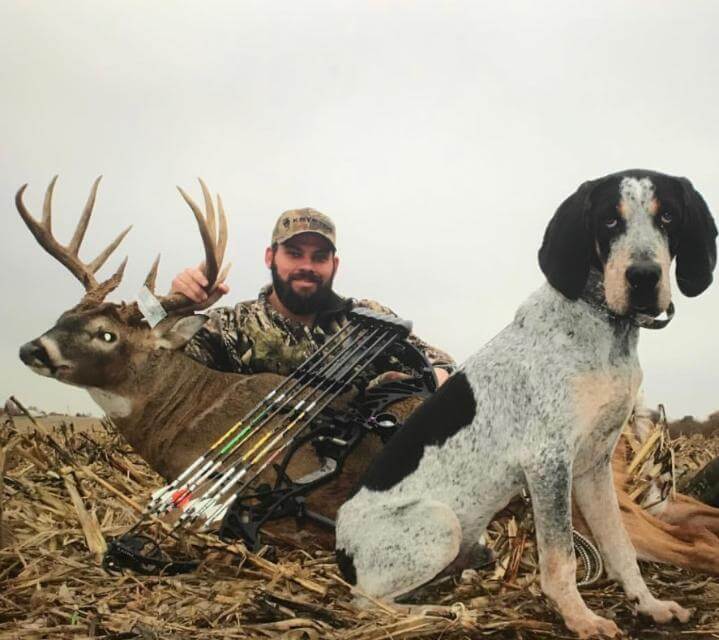
Organized night hunts are held with dogs released to do what they do best, find the raccoon. Other activities such as Bench Conformation shows may be held with these hunts. Water Races are also conducted so that the dogs can demonstrate their ability and tenacity to follow the scent with water being no obstacle to their enthusiasm.
If utilizing their hunting background is not your thing, there are many AKC competitions to try. Blueticks are shown in Conformation, Obedience, Fast CAT, Dock Diving, and Rally. And a Bluetick Coonhound as a Therapy Dog in a nursing home is sure to be a hit as they stir many childhood memories. It is amazing how many stories you will hear about the Blueticks of their father or grandfather as the ghost of those hounds lie just beyond your sight.
If you are interested in the Bluetick Coonhound, own a Bluetick, or you’re looking for a breeder, we encourage you to contact the National Bluetick Coonhound Association, which you can find on Facebook, or contact: https:// nationalblueticks.com for information so that we can work together to preserve this truly American hound.
